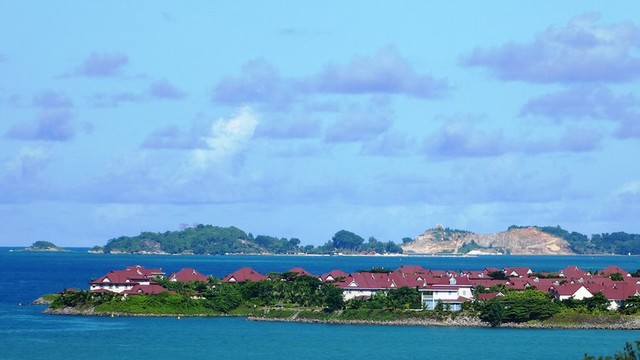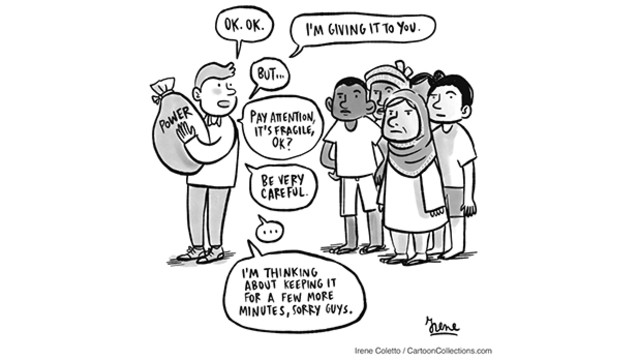COP27 and the important year ahead
Just over a week on from the end of COP26 in Glasgow and the dust is settling. But as Andrew Norton reflects, any gains made from the event will require ongoing work and citizens demanding more radical action.


Climate march during COP26 (Photo: Tim Dennell via Flickr, CC BY-NC 2.0)
COP26 is over: journalists are filing away their climate crisis notes and returning to other stories. Among many who attended there is a general sense of exhaustion.
There’s no doubt that in some areas we moved forward. The Glasgow Climate Pact (PDF) strongly affirms that 1.5°C above pre-industrial levels is the appropriate temperature goal for global climate action. All countries have been asked to strengthen their 2030 emissions reduction targets in line with 1.5°C by the end of 2022.
The commitment to double adaptation finance by 2025 (against a 2019 baseline), along with heartening momentum towards locally led approaches, is genuine progress.
Finalising the Paris rulebook, including a long-delayed settlement of Article 6 on carbon markets, was an important achievement.
There were a set of potentially important side deals – on forests, methane, coal and transport – though the long-term implications of much of this is not yet clear.
At the cutting edge of action, the ‘Beyond Oil and Gas Alliance’ led by Denmark and Costa Rica charts the way forward – but also the distance still to travel, as the countries signed up represent less than 1% of global production.
But if all this is to have meaning, we must address significant challenges in the year ahead.
Closing the commitment gap before COP27
First, countries will actually have to deliver on mitigation. That means coming back to COP27 in Egypt with stronger Nationally Determined Contributions to get the world on the crucial 1.5°C pathway.
And on that, there are plenty of reasons to be sceptical.
Forty countries did not submit new plans before COP26 (already a year late due to the pandemic). The G20 is key, being the group of the world’s largest economies, accounting for around 80% of global emissions. Some G20 members either didn’t increase their plans for emissions reductions at Glasgow (Indonesia, China, Australia) or went backwards in relation to the Paris pledges of six years ago (Mexico, Brazil).
Then there’s the issue of climate finance where so much more is needed. For starters, it would make a difference to hit the 2020 promised level of US$100 billion per year in 2022 rather than 2023, as the Glasgow Climate Pact anticipates.
Perhaps most important of all will be to get a good start on the process of tightening definitions and working up to far bigger volumes of climate finance for 2025, based on an evidence-based assessment of needs.
On loss and damage, the Glasgow Climate Dialogues will need to move the debate forward rapidly with practical thinking on delivery and types of finance. And other countries should follow Scotland’s lead on pledging finance to address the loss and damage that is already occurring on a huge scale.
In the next few months we must bridge the gap between the climate agenda and the agenda for COP15 of the Convention on Biological Diversity (CBD), which will complete the post-2020 Global Biodiversity Framework in April and May of 2022 in Kunming, China.
We know there are many points of connection, and it will be important to continue the search for solutions that work for climate, nature and livelihoods while preserving the wellbeing and cultural heritage of communities at the frontline of the climate crisis.
Announcements at COP26 showed some movement in this direction, notably the Indigenous Peoples and local communities (IPLCs) joint tenure statement, backed by funders offering $1.7 billion of finance to strengthen IPLC tenure rights and role in forest stewardship.
Who needs to do what for climate justice over the next year?
There are some vital actions and commitments that will be needed if COP26 is to deliver on its promise:
- All countries need to step up on reducing emissions. The big G20 middle-income countries are critical to closing the emissions gap and need to show leadership.
If high-income countries move forward their 2030 and 2050 net-zero targets that will give political space to the big G20 emitters such as China and India to move their targets forward. Given the historic responsibilities of countries that have grown rich over centuries of industrial growth it will not be seen as fair if targets are equivalent for newly industrialised countries.
- All of this will need accountability. Worldwide, civil society needs to hold governments, investors and companies to account on all claims made at COP26 – and to push for increased commitments.
The pace of change will be critical. At the present rate of global emissions the carbon budget for a 50/50 chance of hitting the 1.5°C target will be entirely used up within 10 years. The attitudes of policymakers to the pace of economic and social transformation needed has to change and only public pressure and citizen action can do that.
- The UK must work with Egypt to keep up the diplomatic momentum in the run-up to COP27 in November 2022. To do this it should take a range of actions:
- Keep the team together that worked on COP26
- Reinstate the commitment to the 0.7% of gross national income aid target to make it clear that the UK’s increases in climate finance are more than accounting tricks
- Provide leadership on the 2025 finance agenda, tightening definitions and shifting orders of magnitude of climate finance upwards, and
- Show leadership on emissions domestically, halt fossil fuel subsidies and stop any future investment in fossil fuel projects.
What will IIED prioritise?
Over the coming year we will redouble our efforts to support urgent and transformative action for climate justice, with a focus on the following areas:
- Working with our partners (especially the least developed countries) to build momentum for climate justice and accountability to deliver on the promises of COP26
- Putting pressure for change on our core agendas – such as locally led adaptation and improving access to climate finance for climate-vulnerable communities
- Working to develop practical approaches for financing and addressing loss and damage, and
- Working to build synergies with the CBD agenda in the run-up to COP15, focusing on ways of deploying finance to strengthen rights of IPLCs, applying the lessons of climate finance to addressing biodiversity loss, and seeking ways of tackling climate and biodiversity loss in a combined way through innovative debt management.
There was progress made at Glasgow, but it is fragile. From this point on the momentum needs to build.
- Andrew Norton will be moderating an IIED Debates event reflecting on COP26 and thinking about next steps on Wednesday, 24 November



